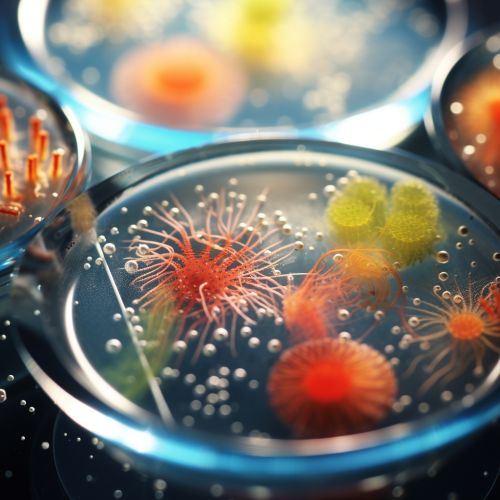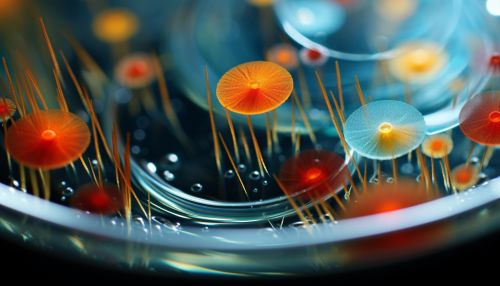Microbial community
Introduction
Microbial communities are complex, dynamic systems composed of multiple species of microorganisms, including bacteria, archaea, fungi, protozoa, and viruses. These communities exist in a variety of environments, from the human gut to the deepest parts of the ocean, and play a crucial role in the functioning of their respective ecosystems.


Composition and Diversity
Microbial communities are incredibly diverse, both in terms of the number of species present and the range of functional roles they perform. This diversity is driven by a combination of environmental factors, such as temperature and nutrient availability, and biological interactions, including competition, predation, and symbiosis. The composition of a microbial community can change rapidly in response to environmental fluctuations, but can also remain relatively stable over long periods of time.
Structure and Organization
The structure of a microbial community refers to the spatial arrangement of its members and their interactions. This structure can be influenced by physical factors, such as the availability of nutrients and light, as well as by the behaviors and interactions of the microorganisms themselves. For example, some microbial communities form structured aggregates known as biofilms, in which cells adhere to each other and to a surface, often producing a matrix of extracellular polymeric substances.
Function and Metabolism
Microbial communities perform a wide range of functions that are crucial for the functioning of their respective ecosystems. These include nutrient cycling, decomposition of organic matter, and production of gases such as oxygen and methane. The metabolic capabilities of a microbial community are determined by the collective metabolic capabilities of its members, and can be influenced by environmental conditions and interspecies interactions.
Ecological Role
Microbial communities play a critical role in many ecological processes. For example, they contribute to nutrient cycling by breaking down organic matter and converting it into forms that can be used by other organisms. They also play a key role in the global carbon cycle, as they are responsible for a significant portion of carbon dioxide production and consumption.
Human Health and Disease
Microbial communities are also of great importance to human health. The human body hosts a diverse array of microbial communities, collectively known as the human microbiota, which contribute to various aspects of health and disease. For instance, the gut microbiota plays a crucial role in digestion, immune function, and even behavior. Disruptions to the normal composition of the microbiota, known as dysbiosis, have been linked to a variety of health problems, including obesity, inflammatory bowel disease, and mental health disorders.
Study and Analysis
The study of microbial communities is a complex and rapidly evolving field. Techniques such as metagenomics, transcriptomics, and proteomics are used to analyze the composition, function, and dynamics of microbial communities. These high-throughput techniques allow researchers to study microbial communities in unprecedented detail, providing insights into their structure, function, and role in various ecosystems.
